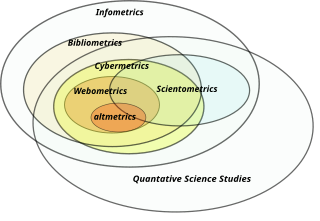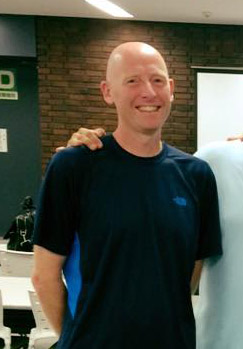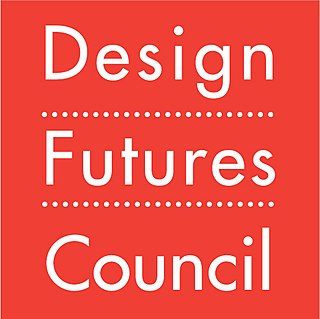Related Research Articles

A design is the concept of or proposal for an object, process, or system. The word, design, refers to something that is or has been intentionally created by a thinking agent, although it is sometimes used to refer to the inherent nature of something – its design. The verb to design expresses the process of developing a design. In some cases, the direct construction of an object without an explicit prior plan may also be considered to be a design. A design is expected to have a purpose within a certain context, usually having to satisfy certain goals and constraints and to take into account aesthetic, functional, economic, environmental, or socio-political considerations. Traditional examples of designs include architectural and engineering drawings, circuit diagrams, sewing patterns, and less tangible artefacts such as business process models.
Dotdash Meredith is an American digital media company based in New York City. The company publishes online articles and videos about various subjects across categories including health, home, food, finance, tech, beauty, lifestyle, travel, and education. It operates brands including Verywell, Investopedia, People, The Balance, Byrdie, MyDomaine, Brides, The Spruce, Simply Recipes, Serious Eats, Liquor.com, Lifewire, TripSavvy, TreeHugger, and ThoughtCo. In August 2012, About.com became a property of IAC, owner of Ask.com and numerous other online brands, and its revenue is generated by advertising. In addition to its Manhattan headquarters, Dotdash Meredith maintains offices elsewhere in the New York metropolitan area, as well as in Des Moines, Iowa, and Birmingham, Alabama.

Information science or informatology is an academic field which is primarily concerned with analysis, collection, classification, manipulation, storage, retrieval, movement, dissemination, and protection of information. Practitioners within and outside the field study the application and the usage of knowledge in organizations in addition to the interaction between people, organizations, and any existing information systems with the aim of creating, replacing, improving, or understanding the information systems.
Information architecture (IA) is the structural design of shared information environments; the art and science of organizing and labelling websites, intranets, online communities and software to support usability and findability; and an emerging community of practice focused on bringing principles of design, architecture and information science to the digital landscape. Typically, it involves a model or concept of information that is used and applied to activities which require explicit details of complex information systems. These activities include library systems and database development.
O'Reilly Media, Inc. is an American learning company established by Tim O'Reilly provides technical and professional skills development courses via an online learning platform. O’Reilly also publishes books about programming and other technical content. Its distinctive brand features a woodcut of an animal on many of its book covers. The company was known as a popular tech conference organizer for more than 20 years before closing the live conferences arm of its business.
Findability is the ease with which information contained on a website can be found, both from outside the website and by users already on the website. Although findability has relevance outside the World Wide Web, the term is usually used in that context. Most relevant websites do not come up in the top results because designers and engineers do not cater to the way ranking algorithms work currently. Its importance can be determined from the first law of e-commerce, which states "If the user can’t find the product, the user can’t buy the product." As of December 2014, out of 10.3 billion monthly Google searches by Internet users in the United States, an estimated 78% are made to research products and services online.

Peter Morville is president of Semantic Studios, an information architecture and findability consulting firm. He may be best known as an influential figure and "founding father" of information architecture, having coauthored the best-selling book in the discipline, Information Architecture for the World Wide Web. For over a decade, he has advised such clients as AT&T, Dow Chemical, Ford, the IMF, the Library of Congress, and Microsoft. Morville was a co-founder and past president of the Information Architecture Institute, and has served on their advisory board. He delivers keynotes and seminars at international events, and his work has been featured in major publications, including Business Week, Fortune, and The Wall Street Journal.

Eric Reiss is an American business and information architecture theorist, consultant and author, known for his work in the field of information architecture, usability, and service design. In 2010, he was named in a blog as "One of the Top 10 European Content Strategists to Watch". In 2019 he sued the Information Architecture Institute following being asked to step down due to multiple accusations of sexual harassment.
Communication design is a mixed discipline between design and information-development concerned with how media communicate with people. A communication design approach is concerned with developing the message and aesthetics in media. It also creates new media channels to ensure the message reaches the target audience. Due to overlapping skills, some designers use graphic design and communication design interchangeably.
The World Wide Web has become a major delivery platform for a variety of complex and sophisticated enterprise applications in several domains. In addition to their inherent multifaceted functionality, these Web applications exhibit complex behaviour and place some unique demands on their usability, performance, security, and ability to grow and evolve. However, a vast majority of these applications continue to be developed in an ad hoc way, contributing to problems of usability, maintainability, quality and reliability. While Web development can benefit from established practices from other related disciplines, it has certain distinguishing characteristics that demand special considerations. In recent years, there have been developments towards addressing these considerations.

Jesse James Garrett is a User Experience Designer based in San Francisco, California and co-founder of Adaptive Path strategy and design consulting firm. His diagram titled The Elements of User Experience launched his popularity in the web design community in early 2000, which was later published as a book. In a 2005 paper, Garrett coined the term Ajax to describe the asynchronous technology behind emerging services like Google Maps and Google Suggest, as well as the resulting user experience which made it possible to browse without interruption by eliminating the reloading of the whole page.
Nick Finck is a UX & design professional, advisor, mentor, coach, speaker and is the founder of Craft & Rigor, a design operations consultancy, in Seattle, Washington. He is known as the co-creator of progressive enhancement. Nick was a co-creator if the Web Standards Project (WaSP) Education Task Force curriculum (Interact/WaSP) which was later merged into the W3C's learning material.

Web content is the text, visual or audio content that is made available online and user encountered as part of the online usage and experience on websites. It may include text, images, sounds and audio, online videos, among other items placed within web pages.
The Information Architecture Institute was a non-profit volunteer organization dedicated to advancing and promoting information architecture. The organization was incorporated in November 2002 and was a 501(c)(6) organization. It grew to become one of the world's largest professional groups for web specialists, with over 1200 members in 60 countries, It was dissolved in September 2019 and is no longer a professional board of trade.
SIGDOC is the Special Interest Group on Design of Communication of the Association for Computing Machinery (ACM), an international learned society for computing. ACM SIGDOC was founded in 1975 by Joseph "Joe" T. Rigo.

The Design Futures Council is an interdisciplinary network of design, product, and construction leaders exploring global trends, challenges, and opportunities to advance innovation and shape the future of the industry and environment. Members include architecture and design firms, building product manufacturers, service providers, and forward-thinking AEC firms of all sizes that take an active interest in their future.
Living labs are open innovation ecosystems in real-life environments using iterative feedback processes throughout a lifecycle approach of an innovation to create sustainable impact. They focus on co-creation, rapid prototyping & testing and scaling-up innovations & businesses, providing joint-value to the involved stakeholders. In this context, living labs operate as intermediaries/orchestrators among citizens, research organisations, companies and government agencies/levels.
Jared Spool is an American writer, researcher, speaker, educator, and an expert on the subjects of usability, software, design, and research. He is the founding principal of User Interface Engineering (UIE), a research, training, and consulting firm that specializes in website and product usability. He is also an amateur magician. Spool attended Niskayuna High School in Niskayuna, NY.
Mindspark Interactive Network, Inc. was an operating business unit of IAC known for the development and marketing of entertainment and personal computing software, as well as mobile application development. Mindspark's mobile division acquired iOS application developer Apalon in 2014, which was known for popular entertainment applications such as Weather Live, Emoji Keypad, and Calculator Pro.

Eric Thich Vi Ly is an American entrepreneur and investor. Ly was co-founder of LinkedIn, a social networking site designed specifically for the business community, where he served as its founding chief technology officer. He is currently the CEO and founder of a blockchain based trust protocol Hub, as well as the CEO and co-founder of KarmaCheck providing candidate's background checks.